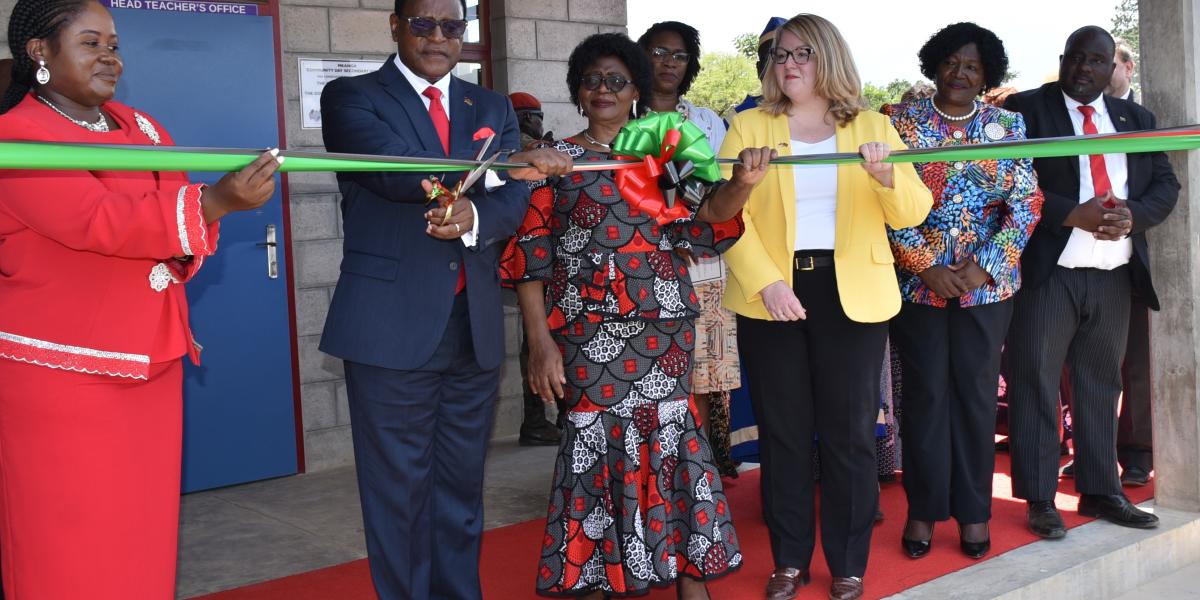USAID and PEPFAR Build 66 New Rural Secondary Schools in Malawi
On January 29, Chargé d ’Affaires Amy Diaz joined Malawi President Dr. Lazarus Chakwera to commemorate the completion of 66 new, rural secondary schools and hand them over to the Government of Malawi. The $90 million Secondary Education Expansion for Development (SEED) project is a unique partnership between USAID and PEPFAR to improve secondary education access nationwide while also achieving key gender-based and public health outcomes, such as reducing early pregnancy, early marriage, and cases of HIV.
The 66 new schools will help create more than 27,000 new spaces for secondary students every school year. They are located in remote areas where the long distances between homes and schools inhibited youth from attending secondary school. The schools feature four classrooms, one science classroom, and administrative and storage rooms. The schools also include a borehole, latrines, and a girls’ changing room so that female students have clean and private sanitation facilities to use. Each school opened with a full complement of school desks and chairs (provided by UNICEF), blackboards, textbooks, and lab equipment. In order to facilitate recruiting teachers for remote areas, each school also has two large teacher houses on the school grounds.

Chargé d’Affaires Amy Diaz, a.i. of U.S. Embassy Lilongwe, at Mkanga Community Day Secondary school, cuts ribbon with Malawi President Dr. Lazarus Chakwera during the school’s ribbon cutting ceremony. Photo Credit: Marcus Muhariwa, U.S. Embassy

The Mkanga Community Day Secondary school is one of 66 new rural secondary schools handed to the Government of Malawi. The handover is part of USAID and PEPFAR’s $90 million Secondary Education Expansion for Development project. This project aims to improve secondary education access nationwide. Photo Credit: Marcus Muhariwa, U.S. Embassy
During the event, Chargé d’Affaires Diaz said, “These schools demonstrate what is possible when we work together. America ndi Malawi ndi pachibale. These schools are built to last, as witnessed during Tropical Cyclone Freddy. Students are now seizing this opportunity to pursue secondary education which will enable them to make positive changes in their lives, and for their families and communities.”
The new schools are a part of a larger partnership between the U.S. and Malawian governments to expand access to high-quality secondary education, so that youth develop essential and marketable skills to live healthier, more productive lives and contribute to the growth of the economy. Previously, the United States delivered 16 new CDSS in seven districts in 2019, and 96 additional classroom blocks in 30 overcrowded urban secondary schools in 2021. By the end of 2024, the United States, in partnership with the Ministry of Education, expects to deliver up to 23 additional rural CDSSs through the SEED project.

